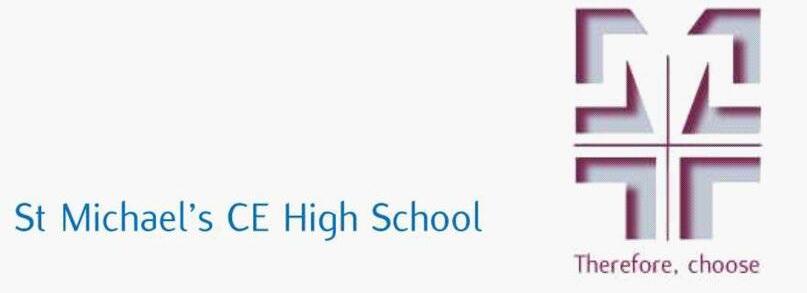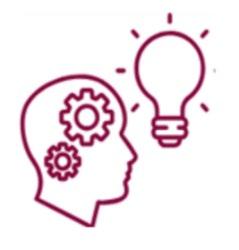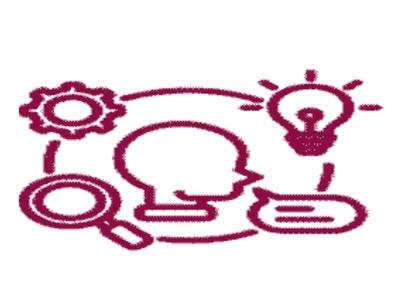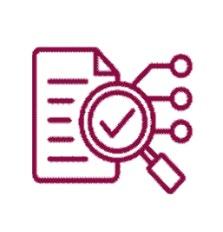
June

Pupils continue in year 9 to build upon the key mathematical skills and concepts they completed in Y7 and Y8. Pupils will become more fluent in the fundamentals of mathematics and they will start to make links between different topics. They will be developing deeper conceptual understanding through concrete, pictorial and abstract representations resulting in an ability to
Topic/Big Question Using Functions1 Using Functions2 Transformations & Vectors1 Transformations & Vectors2
Theme(s)
Key Knowledge

To use functions To calculate gradients and y-intercepts of linear graphs
Translate, reflect and rotate shapes
Enlarge shapes
To know what a function is and the different representations of functions.
To know how to draw a staight line on a cartesian grid.
Key Skills To write functions using a table, algebra notation and a mapping.

To write the gradient and y-intercept given a linear graph
To understand the key words gradient and yintercept for linear graphs
To know what details are needed to describe a translation, reflecton and rotation
To know how to describe an enlargement.
When given two or more points write down the equation of the line connecting the points.
Given the gradient and another point draw the associated linear graph and find the equation of the line.
To plot the graph of a quadratic function.
To translate, reflect and rotate a shape.
Carry out a combination of translations, reflections and rotations.
To describe a translation, rotation or reflection.
To enlarge a shape using a centre and a positive scale factor.
To enlarge a shape using a fractional or negative scale factor.
To describe an enlargement.
Expand and factorise double brackets.
Solve a quadratic equation
To know the key words term, equation, expression, inequality, formulae and identity.
To know the 3 different methods used to solve a quadratic equation
To recognise the difference between an equation and an identity
To expand and simplify the product of 2 binomials.
To expand and simplify the product of 3 binomials.
To factorise a quadratic expression (coefficient of x^2 = 1) into 2 brackets.
To solve a quadratic equation (coefficient of x^2 = 1) by first factorising in to 2 brackets.
To solve a quadratic using the quadratic formula.
To use a graph to find the approximate roots of quadratic equations.
Constructing different types of triangles.
Construct perpendicular and angle bisectors
To know the different triangle constructions. (side,side,side), (side, ange, side), (angle side, angle).
To know what loci are.
To know how to construct perpendicular and angle bisectors
Percentage calculation (non calculator methods)
To know a percentage is parts of 100.
To know how to convert common percentages' to decimals and vice versa.
To accurately draw a straight line of a certain length.
To construct angle bisectors.
To accurately draw an angle.
To construct perpendicular bisectors.
To accurately construct with protractor and compassess the 3 different types of triangle including a triangle given rightangle, hypotenuse and side.
To construct a perpendicular through a point on a line and through a point to a line .
To construct diagrams to solve loci problems.
Without a calculator..
To write one quantity as a percentage of another.
To find a percentage of a quantity.
To calculate an amount after a percentage change.
To find a percentage change.
To solve a reverse percentage problem (eg find the original amount).
Percentage calculations (calculator methds)
To know how to convert a percentage to a decimal and vice versa.
To know the difference between simple and compound interest.
With a calculator…
To use efficient calculator methods to perform the same tasks as the previous unit.
To calculate repeated percentage (and fractional) change
To draw, interpret and describe 3 dimensional shapes.
To recognose and know properties of cubes, cuboids, prisms, cylinders, pyramids, cones ansd spheres.
To know the difference between similarity and congruence.
To draw and interpret plans and elevations.
To draw and interpret isometric drawings.
To calculate length and angles with shapes that are similar.
To use area and volume scale factors to work with similar shape problems.
To prove if shapes are either similar or congruent.



To learn about payslips, tax, loans, other forms
and
